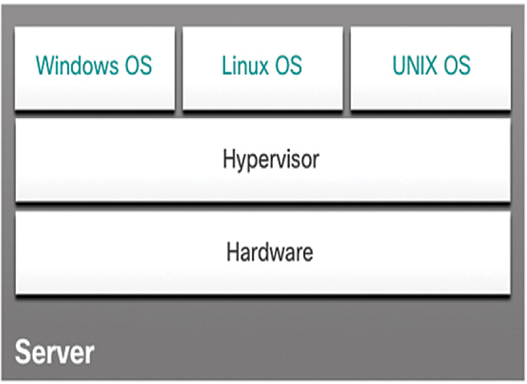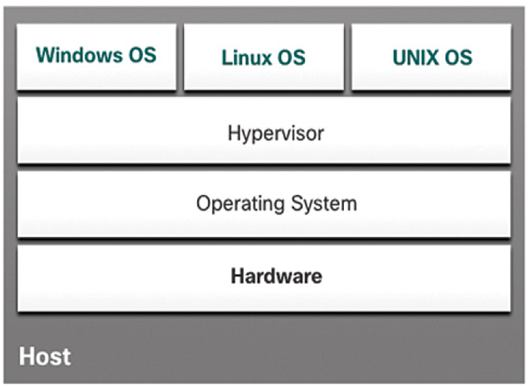Network virtualization combines both hardware and software network resources. Network virtualization comes in many forms and new types of virtualization are being developed.
Advantages of Virtualization (19.2.1)
One major advantage of virtualization is overall reduced cost:
• Less equipment is required – Virtualization enables server consolidation, which requires fewer physical devices and lowers maintenance costs.
• Less energy is consumed – Consolidating servers lowers the monthly power and cooling costs.
• Less space is required – Server consolidation reduces the amount of required floor space.
These are additional benefits of virtualization:
• Easier prototyping – Self-contained labs, operating on isolated networks, can be rapidly created for testing and prototyping network deployments.
• Faster server provisioning – Creating a virtual server is far faster than provisioning a physical server.
• Increased server uptime – Most server virtualization platforms now offer advanced redundant fault tolerance features.
• Improved disaster recovery – Most enterprise server virtualization platforms have software that can help test and automate failover before a disaster happens.
• Legacy support – Virtualization can extend the life of OSs and applications providing more time for organizations to migrate to newer solutions.
The hypervisor is a program, firmware, or hardware that adds an abstraction layer on top of the physical hardware. The abstraction layer is used to create virtual machines which have access to all the hardware of the physical machine such as CPUs, memory, disk controllers, and NICs. Each of these virtual machines runs a complete and separate operating system. With virtualization, it is not uncommon for 100 physical servers to be consolidated as virtual machines on top of 10 physical servers that are using hypervisors.
Type 1 Hypervisor – “Bare Metal” Approach
Type 1 hypervisors are also called the “bare metal” approach because the hypervisor is installed directly on the hardware. Type 1 hypervisors are usually used on enterprise servers and data center networking devices.
With Type 1 hypervisors, the hypervisor is installed directly on the server or networking hardware. Then, instances of an OS are installed on the hypervisor, as shown in Figure 19-2. Type 1 hypervisors have direct access to the hardware resources; therefore, they are more efficient than hosted architectures. Type 1 hypervisors improve scalability, performance, and robustness.

Figure 19-2 Type 1 Hypervisor
Type 2 Hypervisor – “Hosted” Approach
A Type 2 hypervisor is software that creates and runs VM instances. The computer, on which a hypervisor is supporting one or more VMs, is a host machine. Type 2 hypervisors are also called hosted hypervisors. This is because the hypervisor is installed on top of the existing OS, such as macOS, Windows, or Linux. Then, one or more additional OS instances are installed on top of the hypervisor, as shown in Figure 19-3. A big advantage of Type 2 hypervisors is that management console software is not required. Oracle VirtualBox and Microsoft Virtual PC are two examples of Type 2 hypervisor software.
Note:
It is important to make sure that the host machine is robust enough to install and run the VMs, so that it does not run out of resources.

Figure 19-3 Type 2 Hypervisor
Lab – Install Linux in a Virtual Machine and Explore the GUI (19.2.3)
In this lab, you will install a Linux OS in a virtual machine using a desktop virtualization application, such as VirtualBox. After completing the installation, you will explore the GUI interface.
Refer to the online course to complete this lab.
